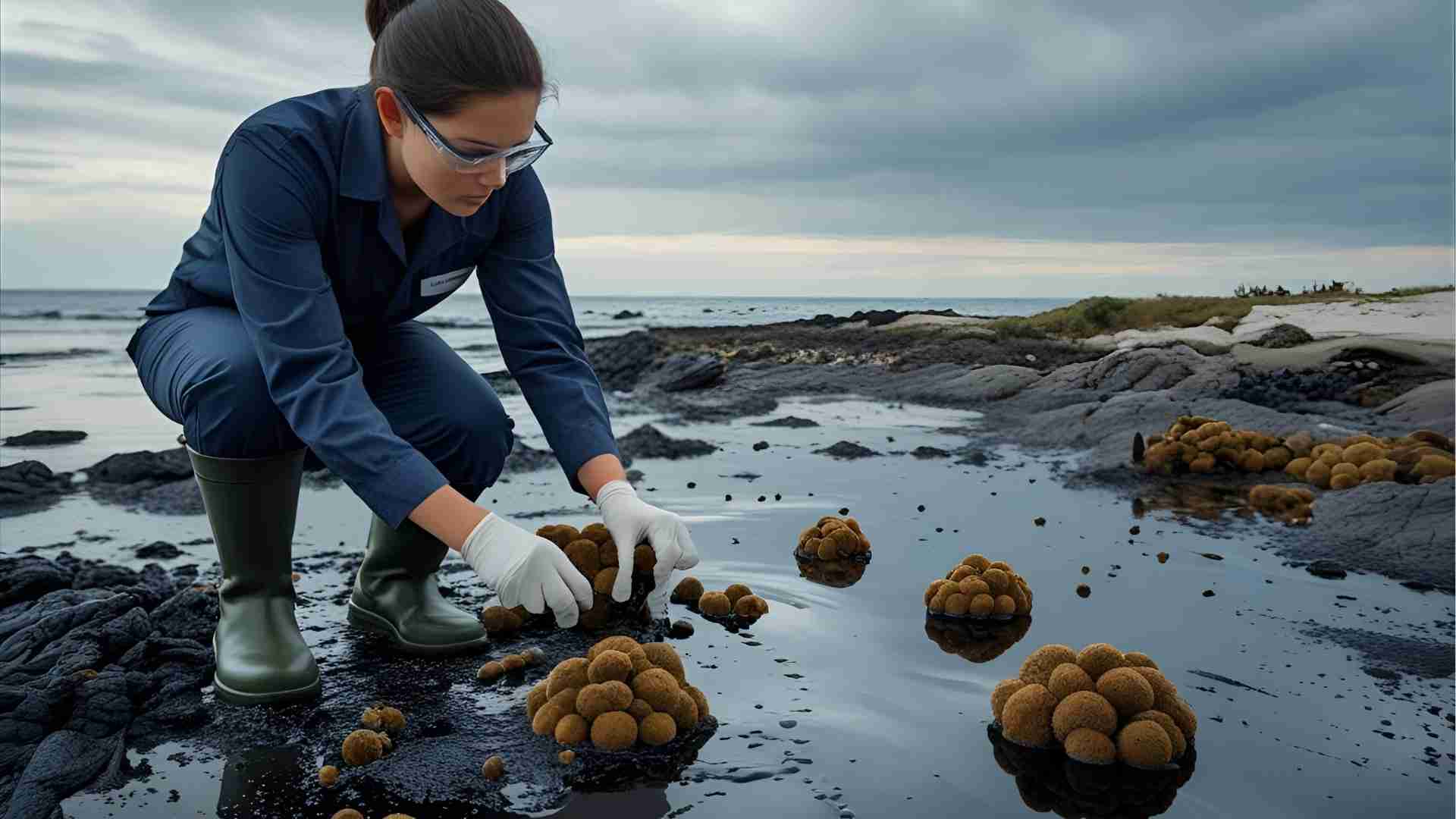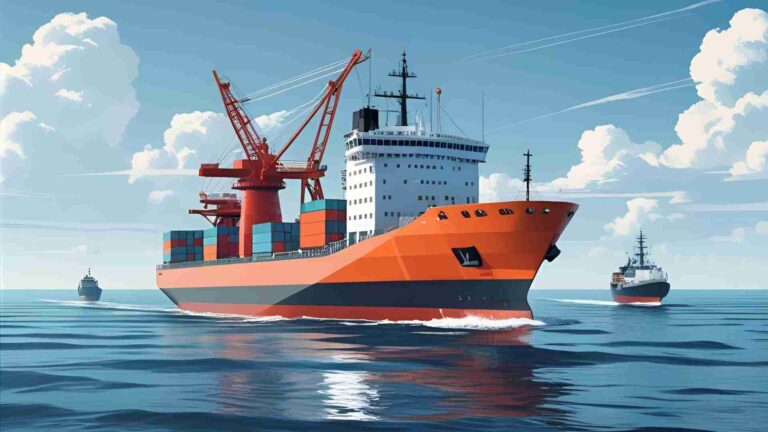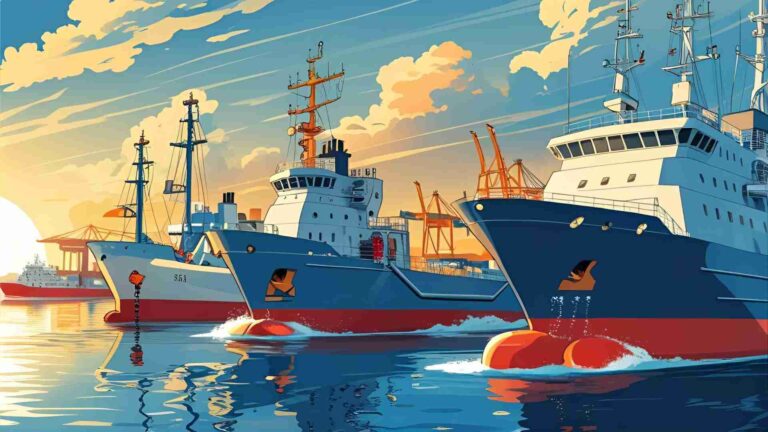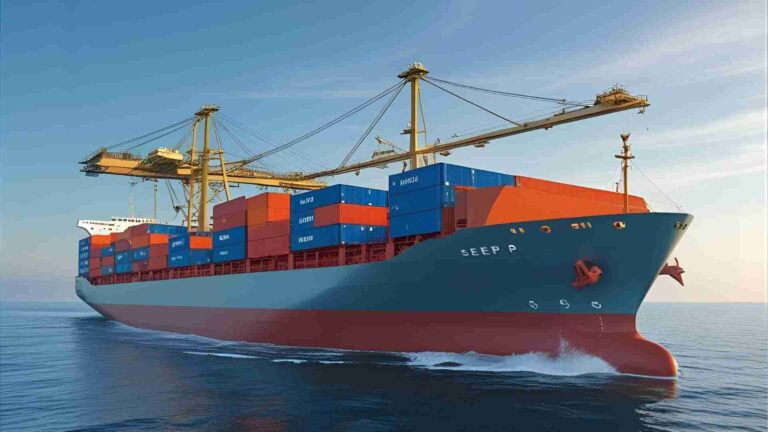What Causes Oil Spills? – Learn About Their Causes and Impact
Discover the causes of oil spills, their devastating impacts, and effective prevention strategies to protect marine ecosystems.
Oil spills are among the most severe environmental disasters, wreaking havoc on marine ecosystems, coastal communities, and global economies. These incidents release crude oil or refined petroleum products into water bodies, causing immediate and long-term damage to wildlife, habitats, and human livelihoods. Understanding the causes of oil spills—ranging from natural phenomena to human errors and deliberate acts—is critical for developing effective prevention and response strategies. This article explores the primary causes of oil spills, their far-reaching impacts, and the measures being implemented to mitigate their devastating effects.
Causes of Oil Spills
Oil spills can occur due to natural events, human activities, or intentional acts. Below, we break down the main causes, providing insight into how these incidents happen and their contributing factors.
Natural Causes
While human activities are responsible for most oil spills, natural phenomena can also contribute. These events, though less frequent, can release significant amounts of oil into marine environments.
Seepage from the Seafloor
Hydrocarbons naturally migrate from underground reservoirs to the ocean floor, lake beds, or terrestrial surfaces through a process known as seepage. These seeps occur when oil and gas escape through fractures in the Earth’s crust, often in geologically active areas. According to the National Academy of Sciences, natural seeps release approximately 600,000 metric tons of oil annually into the global oceans. However, these seeps typically occur deep beneath the sea, dispersing oil over large areas and rarely causing concentrated spills that threaten ecosystems.
Volcanic Activity
Underwater volcanic eruptions can release oil and gas stored beneath the seafloor. The intense heat and pressure from these eruptions force hydrocarbons to the surface, forming oil slicks. Similarly, above-ground volcanic activity can produce tarballs—solidified lumps of oil—that wash ashore, impacting coastal ecosystems. The U.S. Geological Survey estimates there are about 1,350 potentially active volcanoes worldwide, with around 500 having erupted historically. Volcanic oil releases are rare and typically localized, posing minimal risk to populated areas.
Natural Disasters
Severe weather events like hurricanes, tsunamis, and storms can damage oil infrastructure, leading to spills. High winds, strong currents, and rough seas can rupture pipelines, damage storage tanks, or cause vessels to run aground. For instance, Hurricane Katrina in 2005 caused multiple oil spills in the Gulf of Mexico, releasing over 8 million gallons of oil from damaged platforms and pipelines. As climate change intensifies, the frequency and severity of such events are increasing, making natural disasters a growing concern for oil spill risks.
Human-Related Causes
Human activities account for approximately 90% of oil spills, according to Eos, a science magazine by the American Geophysical Union. These incidents stem from accidents, negligence, or deliberate actions, often exacerbated by inadequate maintenance or regulatory oversight.
Shipping and Tanker Accidents
Commercial shipping, particularly oil tankers, is a leading cause of oil spills. Collisions between vessels, groundings, or structural failures can release vast amounts of oil. For example:
- Collisions: In congested waterways or during adverse weather, ships may collide, damaging hulls and causing leaks.
- Groundings: Vessels running aground on reefs or shallow waters can rupture their hulls, releasing oil. The Exxon Valdez spill in 1989, where a supertanker struck a reef in Prince William Sound, Alaska, released 11 million gallons of crude oil.
- Hull Failures: Aging or poorly maintained vessels are prone to hull breaches. Single-hulled tankers, common before modern regulations, were particularly vulnerable.
Offshore Drilling Accidents
Offshore drilling operations pose significant risks due to the complexity and high-pressure environments involved. Key causes include:
- Blowouts: Uncontrolled releases of oil and gas occur when pressure control systems fail during drilling. The Deepwater Horizon disaster in 2010, caused by a blowout, released 210 million gallons of oil into the Gulf of Mexico over three months.
- Wellhead Failures: Malfunctions in blowout preventers or other wellhead equipment can lead to uncontrolled oil flows. These incidents often result in catastrophic spills and pose safety risks to workers.
Pipeline and Storage Tank Failures
Pipelines and storage tanks are critical components of oil infrastructure but are susceptible to failures due to:
- Corrosion: Over time, pipelines and tanks corrode, leading to cracks or leaks. In 2010, a corroded pipeline in Michigan released 840,000 gallons of oil into the Kalamazoo River.
- Equipment Failures: Malfunctioning valves, pumps, or fittings can cause accidental releases.
- Inadequate Maintenance: Poor monitoring and maintenance exacerbate the risk of failures, highlighting the need for rigorous inspection protocols.
Accidents During Oil Transfer Operations
Oil transfer between vessels or from vessels to storage facilities is a high-risk activity. Spills can occur due to:
- Equipment Failures: Broken hoses or pumps can lead to spills during transfer.
- Human Error: Miscommunication or improper handling during refueling can cause overflows.
- Ground Movement: Seismic activity or construction-related accidents can rupture pipelines, disrupting oil transfers.
Deliberate Spills
Intentional acts, though less common, contribute significantly to oil pollution. These include:
- Illegal Dumping: Companies or individuals may illegally discharge oily waste to avoid disposal costs. For example, in 2016, Brazil’s state-run oil company Petrobras was implicated in a scandal involving the illegal dumping of millions of liters of oil and toxic waste.
- Bilge Water Discharge: Ships may release oily bilge water—a mixture of oil, fuel, and water from the lower compartments—into the ocean, causing cumulative environmental harm.
- Sabotage and Acts of War: Deliberate attacks on oil infrastructure, such as pipelines or offshore platforms, can cause massive spills. During the 1991 Gulf War, Iraqi forces intentionally released 240–336 million gallons of oil into the Persian Gulf to disrupt U.S.-led coalition operations.
Small Vessel Spills
Small spills from recreational and fishing boats, though individually minor, collectively contribute to significant oil pollution. In Washington’s Puget Sound, thousands of small vessels are the largest source of oil pollution due to:
- Refueling Spills: Overflows during refueling can release small amounts of oil.
- Bilge Discharge: Oily water pumped from a vessel’s bilge can contaminate surrounding waters.
A checklist for preventing small spills, provided by Aaron Barnett of Washington Sea Grant, includes:
- Tighten engine bolts to prevent leaks.
- Replace worn hydraulic lines and fittings.
- Use oil trays or drip pans under engines.
- Install bilge socks made of absorbent pads.
- Avoid overflows during refueling by monitoring tank capacity.
- Use absorbent pads or fuel collars to catch drips.
- Shut off bilge pumps during refueling.
If spills occur, boaters should contain them with absorbent pads, notify the Coast Guard and state spill response offices, and inform marina staff for assistance.
Impacts of Oil Spills
Oil spills have profound and lasting effects on marine ecosystems, coastal communities, and economies. The following sections detail these impacts.
Harm to Marine Life
Oil spills are catastrophic for wildlife, affecting species across the food chain:
- Birds and Mammals: Oil coats feathers and fur, reducing insulation and causing hypothermia. Seabirds and marine mammals, like sea otters, may ingest oil while grooming, leading to poisoning and organ damage.
- Fish and Invertebrates: Oil contaminates food sources, disrupts reproduction, and causes developmental abnormalities. For example, the Deepwater Horizon spill led to a 20% decline in bottlenose dolphin populations in the Gulf of Mexico.
- Long-Term Effects: Oil residues can persist in sediments, affecting marine life for decades. The Exxon Valdez spill continues to impact fish populations in Prince William Sound.
Habitat Destruction
Sensitive ecosystems suffer severe damage from oil spills:
- Salt Marshes and Mangroves: Oil smothers vegetation, disrupting food webs and causing erosion.
- Coral Reefs: Oil blocks sunlight and oxygen, killing corals and associated marine life.
- Beaches and Shorelines: Oil contamination renders habitats uninhabitable, affecting nesting sites for turtles and birds.
Economic Impacts
Oil spills disrupt industries and livelihoods:
- Fisheries: Contaminated waters lead to fishing bans, affecting fishermen’s incomes. After the Deepwater Horizon spill, Gulf Coast fisheries lost an estimated $2.5 billion.
- Tourism: Beach closures and polluted waters deter tourists, impacting local businesses. The Exxon Valdez spill caused a $580 million loss to Alaska’s tourism industry.
- Clean-Up Costs: Spill response and remediation are costly, with Deepwater Horizon’s clean-up exceeding $65 billion.
Human Health Risks
Oil spills pose risks to human health through:
- Exposure to Toxins: Inhaling volatile organic compounds or skin contact with oil can cause respiratory issues, skin irritation, and long-term health problems.
- Contaminated Seafood: Consuming contaminated fish or shellfish can lead to foodborne illnesses.
Prevention and Mitigation Strategies
Preventing oil spills requires a multifaceted approach involving technology, regulations, and preparedness. Below are key strategies:
Enhanced Ship Design
Modern tankers are equipped with double hulls, mandated by the International Maritime Organization (IMO) under MARPOL Annex I. Double hulls provide an additional barrier, reducing spill risks in collisions or groundings. Since 1992, new tankers must have double hulls, with phase-in schedules for existing vessels completed by 2003.
Improved Operational Procedures
Rigorous protocols can minimize operational spills:
- Refueling: Strict procedures, such as monitoring tank levels and using absorbent pads, prevent overflows.
- Waste Management: Proper disposal of oily waste and regular maintenance reduce illegal discharges.
- Training: Crew training ensures adherence to safety standards.
International Regulations
The IMO’s MARPOL Convention, adopted in 1973 and enforced since 1983, is the cornerstone of marine pollution prevention. Its six annexes address various pollution types, with Annex I focusing on oil. Key regulations include:
- Mandatory double hulls for tankers.
- Limits on oily waste discharges, prohibiting releases within 12 miles of land.
- Special Areas with stricter controls, such as the Mediterranean Sea and Baltic Sea.
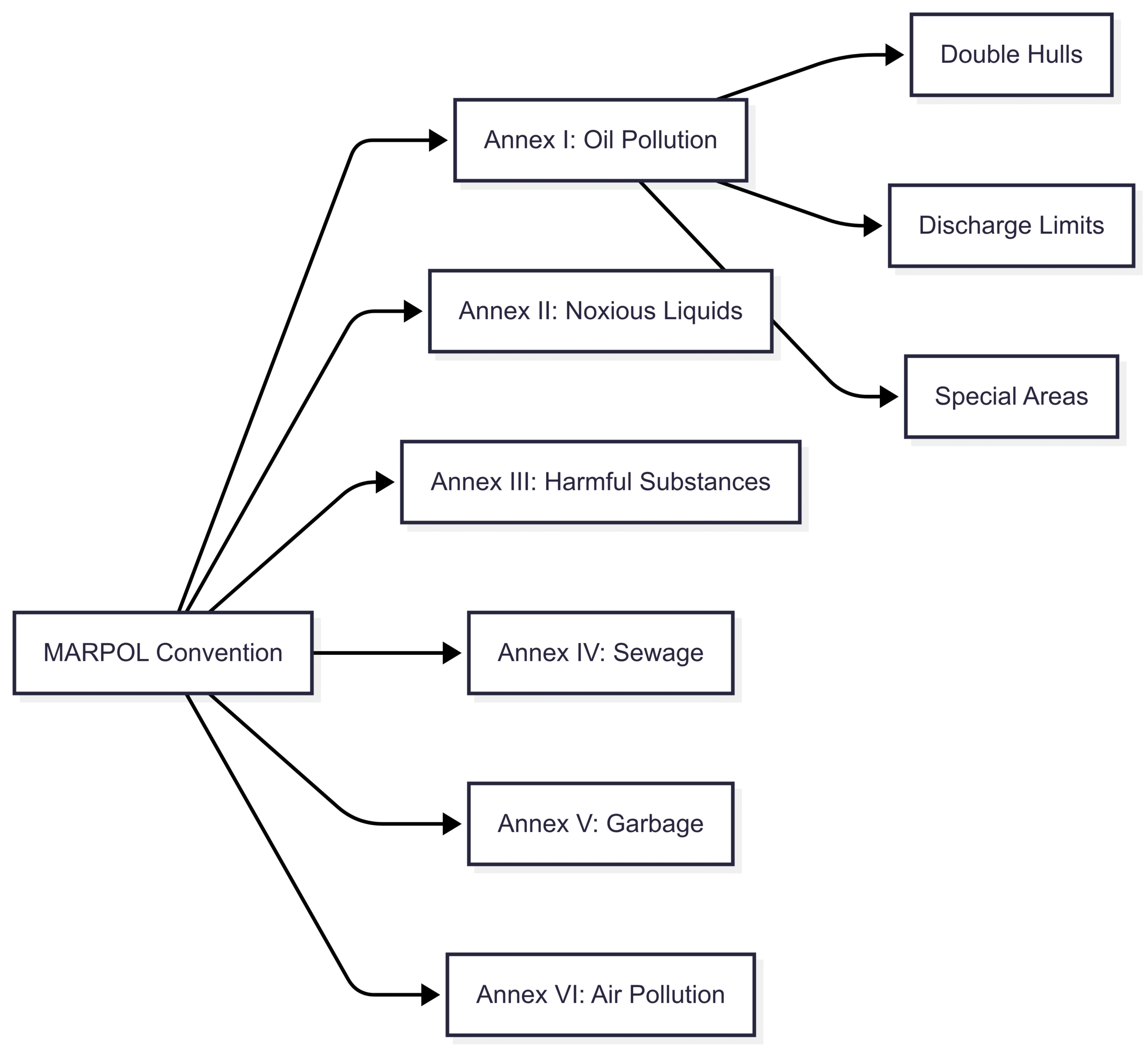
Effective Spill Response
Preparedness is critical for minimizing spill impacts:
- Response Plans: Governments and companies maintain spill response plans, including containment booms and skimmers.
- Trained Personnel: Rapid deployment of trained teams reduces spill spread.
- Equipment: Stockpiling absorbent materials and dispersants ensures quick action.
Monitoring and Enforcement
Aerial surveillance, satellite monitoring, and port inspections deter illegal discharges. The U.S. Coast Guard and other agencies enforce compliance with MARPOL and national laws like the Act to Prevent Pollution from Ships (APPS). Whistleblowers play a vital role, often receiving financial rewards for reporting violations, leading to successful prosecutions under APPS.
Reducing Oil Dependency
Transitioning to renewable energy sources, such as wind and solar, reduces the demand for oil, lowering the risk of spills. Electric vehicles and alternative fuels further decrease reliance on petroleum-based transport.
Notable Oil Spills
Two of the most infamous oil spills illustrate the catastrophic consequences of these events:
Exxon Valdez (1989)
- Location: Prince William Sound, Alaska
- Cause: The supertanker Exxon Valdez struck a reef due to navigational errors, rupturing its hull.
- Volume: 11 million gallons (260,000 barrels)
- Impact: Devastated marine life, including sea otters, seals, and seabirds. Contaminated 1,300 miles of coastline, causing $2.8 billion in damages. Long-term ecological effects persist.
- Response: Led to stricter regulations, including mandatory double hulls.
Deepwater Horizon (2010)
- Location: Gulf of Mexico
- Cause: A blowout on the Deepwater Horizon rig, operated by BP, caused an explosion and uncontrolled oil release.
- Volume: 210 million gallons (4.9 million barrels)
- Impact: Killed 11 workers, harmed dolphins, turtles, and fish, and damaged coral reefs. Economic losses exceeded $65 billion, affecting fisheries and tourism.
- Response: Strengthened offshore drilling regulations and spill response protocols.
| Spill Event | Location | Cause | Volume (Gallons) | Economic Impact (USD) |
|---|---|---|---|---|
| Exxon Valdez | Prince William Sound, Alaska | Grounding | 11 million | $2.8 billion |
| Deepwater Horizon | Gulf of Mexico | Blowout | 210 million | $65 billion |
Role of Whistleblowers
Whistleblowers are critical in combating illegal oil discharges. By reporting violations, such as bilge water dumping, they help enforce regulations like APPS. Financial incentives encourage reporting, and successful prosecutions have led to fines and penalties, deterring future violations. For example, whistleblower reports in the U.S. have resulted in millions of dollars in fines against shipping companies.
Partnering with Response Organizations
Companies like ACME Environmental, a certified Oil Spill Removal Organization (OSRO), provide 24/7 response services. Partnering with such organizations ensures rapid containment and clean-up, minimizing environmental and economic damage. Their expertise includes deploying booms, skimmers, and dispersants, tailored to the spill’s scale and location.
Conclusion
Oil spills, whether caused by natural disasters, human errors, or deliberate acts, pose severe threats to marine ecosystems, economies, and communities. By understanding their causes—ranging from seafloor seepage to tanker accidents and illegal dumping—we can implement robust prevention measures. Enhanced ship designs, strict regulations like MARPOL, and effective response strategies are critical to reducing spill risks. Additionally, whistleblowers and response organizations play pivotal roles in enforcement and mitigation. Transitioning to sustainable energy sources offers a long-term solution to minimize oil spill risks, protecting our oceans and coastlines for future generations.
Happy Boating!
Share What Causes Oil Spills? – Learn About Their Causes and Impact with your friends and leave a comment below with your thoughts.
Read Ship Propulsion Loss: Guideline on Reducing Risks until we meet in the next article.
